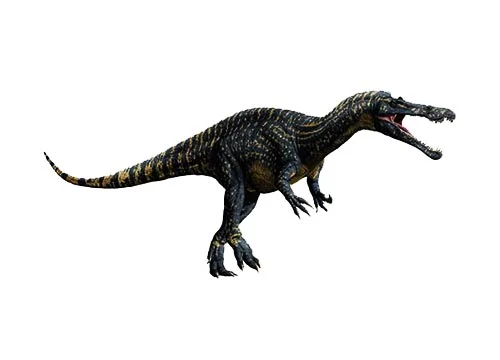Baryonyx (Heavy claw)

Bah-ree-on-ix
Alan Charig & Angela Milner - 1986
Carnivore/Piscivore
Estimated 9-10 meters long
Large Theropod
B. walkeri (type)
England, Surrey. Spain. Portugal. Possibly North Africa
Early Cretaceous, 130 million years ago
Baryonyx Facts
Baryonyx, meaning “heavy claw” in Greek, was a large, carnivorous dinosaur that lived approximately 130 million years ago. This dinosaur species was characterized by its long, slender snout and large, hooked claw on its first finger, which it used to catch fish and other small prey.
One of the most interesting things about Baryonyx is that it is one of the few dinosaurs known to have been adapted to a semi-aquatic lifestyle. Fossils of this dinosaur species have been found near riverbeds and lake deposits, suggesting that it lived near water and used its sharp claws to catch fish. This is supported by the discovery of fish scales and the remains of other aquatic animals in the gut of one of the specimens, providing evidence of its aquatic diet.
Baryonyx was a large dinosaur, with estimates suggesting that it could have reached lengths of up to 10 meters and weighed as much as 1.5 tons. Despite its size, it was still a agile hunter, using its long neck and sharp teeth to catch its prey.
In addition to its semi-aquatic lifestyle and unique adaptations, Baryonyx is also of interest to paleontologists because of the well-preserved fossils that have been found. These fossils provide important information about the anatomy and lifestyle of this dinosaur species, and help to shed light on the evolution of theropod dinosaurs and the ecology of the early Cretaceous period.
In conclusion, Baryonyx is a fascinating and unique dinosaur species that provides important insights into the evolution of theropod dinosaurs and the ecology of the early Cretaceous period. Whether you’re a seasoned paleontologist or just starting to learn about dinosaurs, Baryonyx is sure to captivate your imagination and inspire your interest in the field of paleontology.



